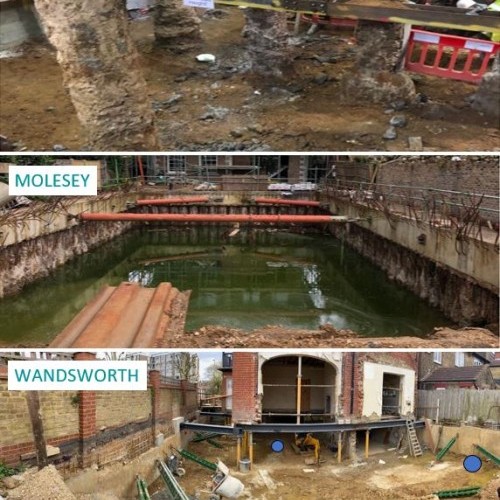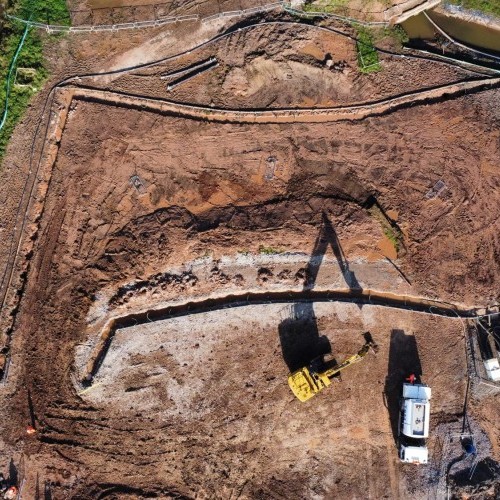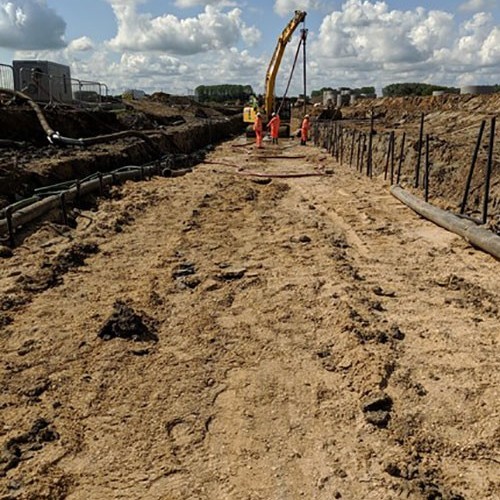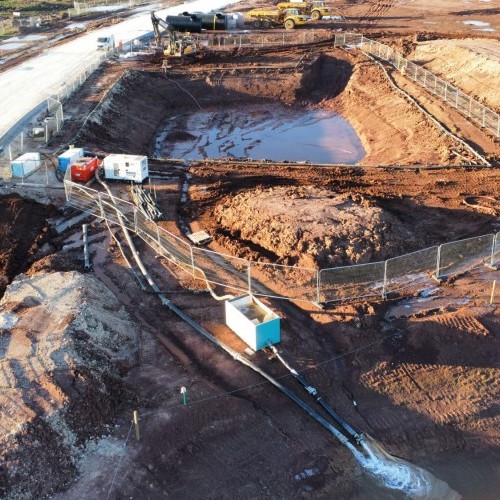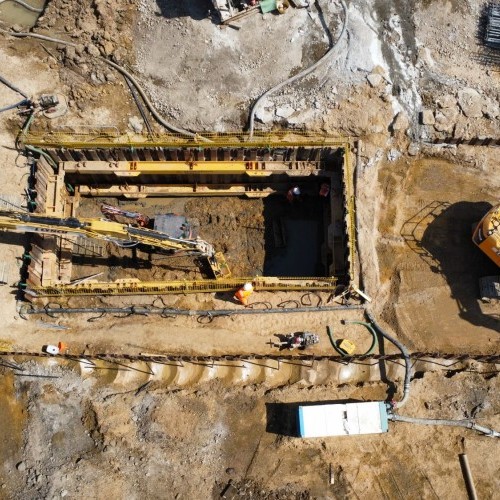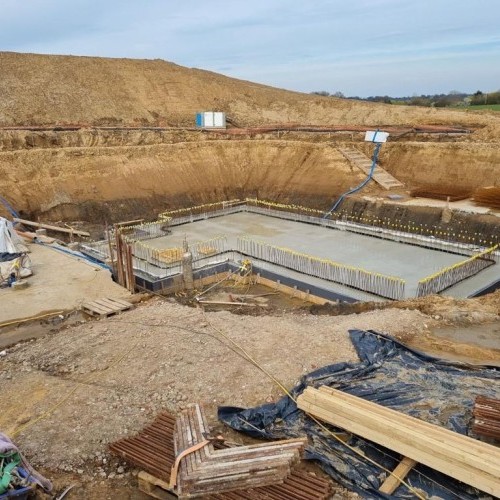PDL enabling dry excavations on various projects across the UK
North East Lincolnshire
Introduction
A large perimeter excavation required dewatering assistance as there were concerns over base instability due to hydraulic pressure and semi-artesian conditions in the confined aquifer.
The works
To address the issue, PDL proposed the installation of 13 no. deepwells. The deepwells (300mm bore) would penetrate the SAND aquifer beneath the CLAY at a depth ranging from 15mbgl to 25mbgl. 7 no. wells would be fitted with submersible pumps while the other 6 wells would act as passive pressure relief wells. The passive relief wells were cased so that they could be pumped on if needed. The project is still ongoing with the dewatering system showing promising results.
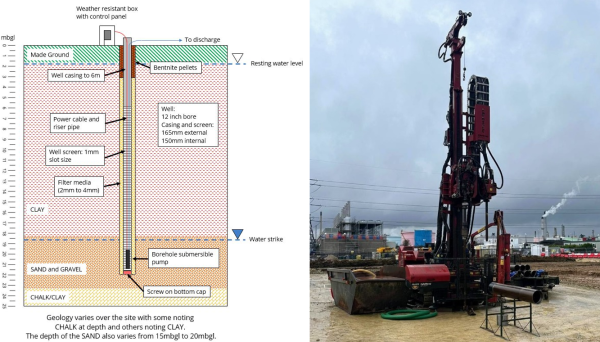
West Midlands
Introduction
A 600m drainage run, ranging from 4 to 6 meters in depth, necessitated the installation of a dewatering system to enable excavation under dry conditions. The geological composition comprises clayey made ground overlaying silty SAND and GRAVEL, with the groundwater level standing just below the clayey strata at a depth of 2 meters.
The works
PDL is actively installing double-sided wellpoints to a depth of 6.5 meters. These wellpoints are strategically placed on both sides of the drainage runs, given the excavation’s width of 3 meters. The trenches are being excavated in 100-meter sections, with pumps and pipework being moved to subsequent sections to keep pace with the groundworkers. As of now, the wellpoint system has effectively maintained dry and stable conditions within the trench excavations.

Cambridgeshire
Introduction
During the excavation of a trench to install foul drainage runs, dewatering became necessary upon encountering groundwater inflow and unstable excavation. The proposed trench reaches a depth of 5 meters within a very silty SAND geology. Groundwater levels were observed to be shallow, ranging from 1 mbgl to 2 mbgl.
The works
PDL proposed double-sided wellpoints be installed at 1.5-meter intervals, extending to a depth of 6 meters. Wellpoints are known to be highly effective in silty soil, and after commissioning the system for a few days, we have already observed significant drawdown in the soil.


West Sussex
Introduction
Groundwater inflow during the excavation of a 10-meter by 10-meter cofferdam brought work to a halt, prompting contact with PDL to install a dewatering system. Geological data from the British Geological Services borehole near the site identified the geology as clayey sand over chalk. During a site visit by PDL, it was observed that groundwater was flowing in from the base, likely due to the hydraulic pressure within the chalk.
The works
To mitigate inflow into the excavation and hydraulic pressure from the chalk, PDL proposed a wellpoint system spaced at 1-meter centers and extending 6 meters deep, reaching into the chalk layer. The wellpoints performed as intended, reducing the groundwater level in the area and diminishing base flow into the excavation. Given the fine-grained soil and the predominant contribution of base inflow, the wellpoint system needed time to sufficiently drop the groundwater levels. Following completion of the works, the system was decommissioned.



